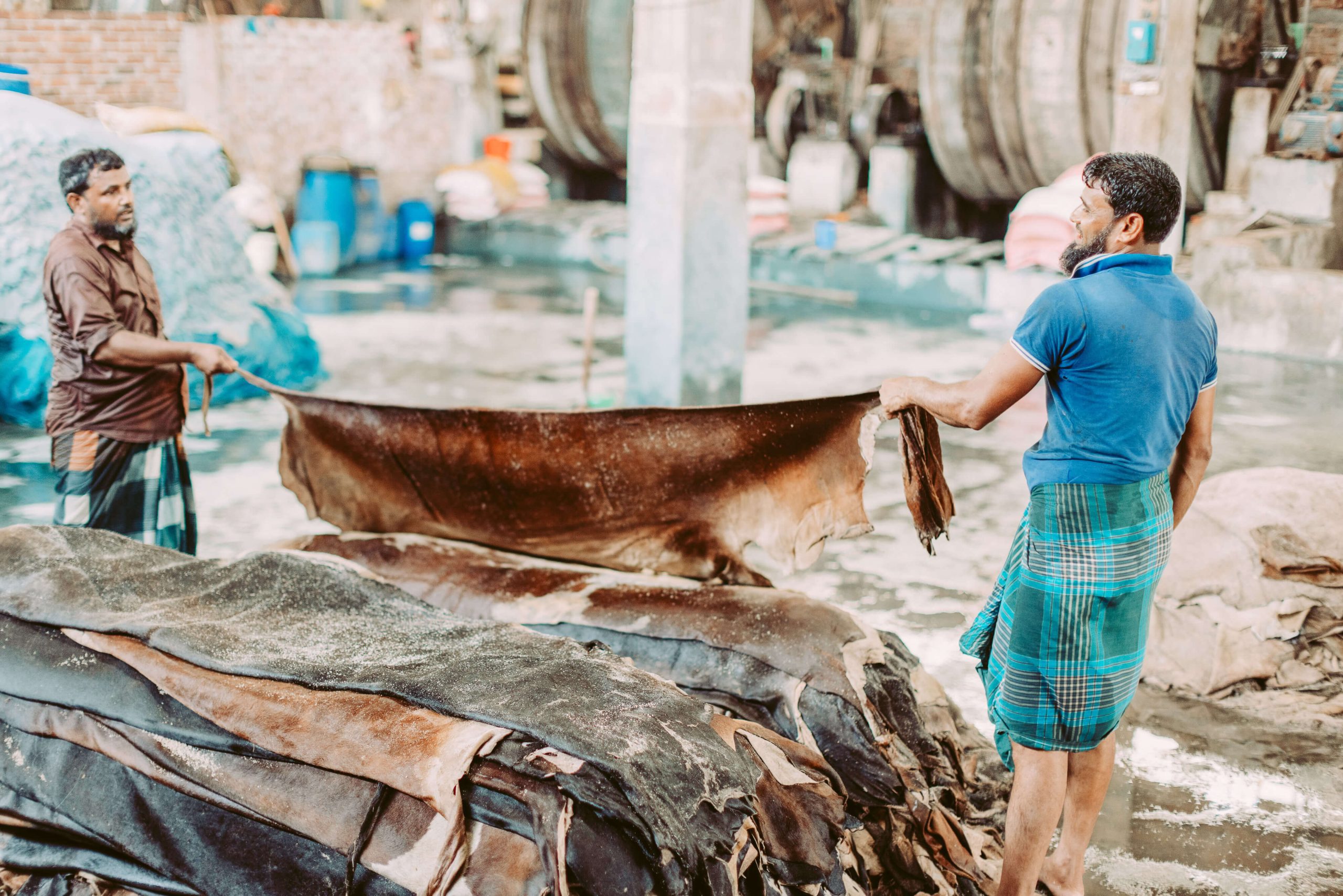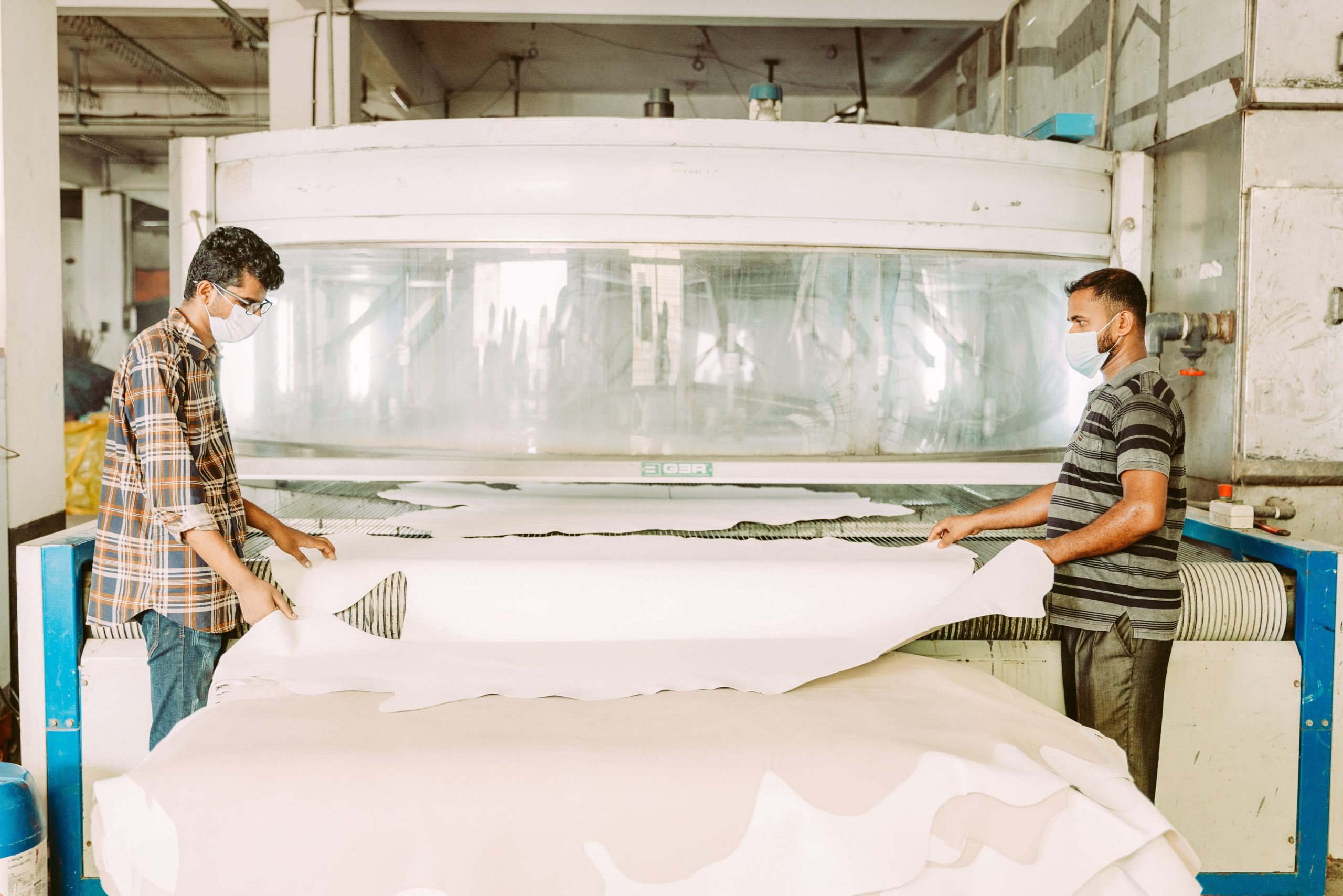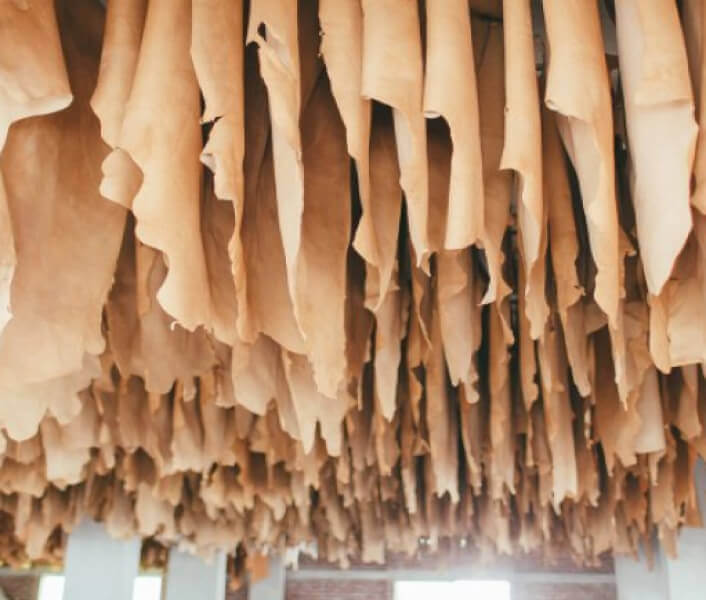Sustainability Meets Style in Our Handbags Factory
In an era where conscious consumerism is more than just a trend, the leather goods industry has seen a remarkable shift towards sustainability without compromising on style. Handbags, once a luxury item, are now being crafted with a focus on eco-friendly practices, ethical sourcing, and quality craftsmanship. As sustainability becomes the new standard in the leather goods industry, the future of handbag production looks brighter, more ethical, and increasingly creative.

Table of contents
- ▶︎1. Genuine Leather & Hides: The Foundation of Quality Handbags
- 1.1 What is Genuine Leather?
- 1.2 The Types of Hides: Cow Hide, Goat Hide, and More
- ▶︎2. The Bag-Making Process: From Raw Material to Finished Product
- 2.1 Leather Selection: Choosing the Right Hide
- 2.2 Leather Preparation and Tanning
- 2.3 Cutting and Stitching
- 2.4 Hardware and Final Assembly
- ▶︎3. Sustainability in the Handbag Manufacturing Process
- 3.1 Eco-Friendly Materials and Practices
- 3.2 Reducing Waste and Promoting Circularity
- ▶︎4. Industry Trends: The Future of Handbags
- 4.1 Technological Advancements
- 4.2 Ethical and Transparent Practices
- ▶︎5.Summary
- 1.2 The Types of Hides: Cow Hide, Goat Hide, and More
1.1 What is Genuine Leather?
Genuine leather, often referred to as full-grain leather, is derived from the hide of animals such as cows, goats, buffalo and sheep’s. It is one of the most durable and versatile materials used in fashion, particularly in the manufacturing of handbags. Genuine leather is known for its rich texture, strength, and ability to age beautifully over time. Unlike synthetic leather, which may wear out quickly, genuine leather develops a unique patina that enhances its appearance, making it a sought-after material in the luxury goods industry.
1.2 The Types of Hides: Cow Hide, Goat Hide, and More
Cow Hide: One of the most commonly used materials in handbag production, cowhide is sturdy, smooth, and naturally water-resistant. Its durability makes it perfect for creating long-lasting products that can withstand the test of time. The strength of cowhide also allows it to be used in the creation of larger handbags, such as totes and travel bags.
Goat Hide: Known for its soft texture and unique grain patterns, goat hide is a premium material for handbags. It is lighter than cowhide but still highly durable. Goat leather is often used for making smaller bags like clutches and cross body bags due to its ability to mold easily into various shapes and sizes.
Buffalo Hide: Similar to cowhide, buffalo hide is highly durable and naturally resistant to wear and tear. It has a distinct grain pattern that gives handbags a rugged yet sophisticated look. Buffalo leather is slightly thicker and more flexible, making it ideal for creating structured bags, such as satchels and messenger bags, that maintain their shape over time.
Other Hides: While cow and goat hides dominate the market, manufacturers also explore hides from exotic animals such as ostriches and lambs. These leathers offer unique textures and finishes that add a distinctive appeal to luxury handbags.
2.1 Leather Selection: Choosing the Right Hide
The journey of crafting a high-quality handbag begins with the selection of leather. The raw hides are sourced from trusted suppliers who follow ethical and sustainable practices. This is where the process of ensuring sustainability begins selecting hides that meet the highest standards of animal welfare and environmental considerations. Once the hides are acquired, they undergo a thorough inspection to check for any imperfections. Only the best-quality hides are chosen, ensuring that every handbag produced is of the highest standard.
2.2 Leather Preparation and Tanning
Leather preparation involves cleaning, conditioning, and preserving the hide to prevent it from deteriorating. The tanning process, a crucial stage in leather goods manufacturing, involves transforming raw hide into supple, durable leather. There are several methods of tanning, but vegetable tanning and chrome tanning are the two most popular.
Chrome Tanning: A faster method that uses chromium salts, chrome tanning produces leather that is soft, flexible, and resistant to water and wear. While it’s more efficient, manufacturers are increasingly exploring ways to reduce the environmental impact of chrome tanning.
Vegetable Tanning: This eco-friendly process uses natural plant-based chemicals to tan the leather, ensuring that the final product is both sustainable and biodegradable. It’s slower than other methods but results in leather that has a distinct color and a more natural texture.
2.3 Cutting and Stitching
After the leather has been prepared, it’s cut into patterns that form the various parts of the handbag. Expert craftsmen use specialized tools to cut out the shapes accurately. Each piece is then stitched together using heavy-duty thread, often reinforced with a wax coating for extra strength and durability. Precision is key in this stage to ensure a flawless final product.
2.4 Hardware and Final Assembly
No handbag is complete without its hardware zippers, buckles, clasps, and handles. These components are carefully selected to complement the leather and design, ensuring they are both functional and stylish. Once the hardware is attached, the final assembly takes place, and the bag is polished and inspected for quality.

3.1 Eco-Friendly Materials and Practices
Sustainability has become a core value in the leather goods industry. Today, many manufacturers, including those at the forefront of handbag production, are embracing environmentally friendly practices. This includes using vegetable-tanned leather, reducing water usage during the tanning process, and ensuring that every stage of production is as eco-conscious as possible.
In addition, sustainable sourcing of leather is essential. By working with tanneries that adhere to the Leather Working Group (LWG) standards, manufacturers can ensure that their products are made from leather that has been ethically sourced, without compromising on quality or craftsmanship.
3.2 Reducing Waste and Promoting Circularity
The leather goods industry is increasingly adopting a circular economy model. This includes reducing waste through efficient cutting techniques and reusing scrap materials for smaller accessories. Brands are also investing in take-back schemes, allowing customers to return used handbags for recycling or repurposing.
Recycling leather scraps into new products like keychains, wallets, or smaller accessories is one way the industry is addressing waste. Additionally, the use of upcycled or repurposed leather is gaining traction, with brands creating beautiful handbags from leather that would otherwise be discarded.

>>> For more information on leather goods Click here.
4.1 Technological Advancements
The leather goods industry is undergoing a technological revolution. From 3D printing to AI-driven design tools, technology is streamlining the manufacturing process and opening up new possibilities for creating personalized and custom-made handbags. This innovation allows brands to offer bespoke products that cater to the individual tastes and preferences of customers.
4.2 Ethical and Transparent Practices
With consumers becoming increasingly concerned with ethical sourcing, there is a growing demand for transparency in the production process. More brands are now providing detailed information about the materials they use, where they source their leather, and the conditions under which their workers operate. This shift towards transparency is not only about meeting consumer expectations but also about promoting accountability and trust within the industry.
The world of handbags has evolved significantly, combining timeless craftsmanship with modern-day innovations. Genuine leather, whether from cowhide, goat hide, or exotic hides remains the foundation of luxury handbags, valued for its durability, texture, and unique appeal. Through meticulous craftsmanship, ethical sourcing, and sustainable practices, manufacturers are producing bags that are not only stylish but also environmentally responsible.

Leather bag, wallet BLJ bangladesh Whether you’re a brand, startup, or private label. our expert craftsmanship, premium & sustainable materials, and attention to detail ensure your designs come to life with exceptional quality and precision. >>> Click leather page~
Quality vs. Quantity: Why Handmade Leather Goods manufacturing are Worth the Investment
Leather Goods for Every Budget: Finding the Perfect Price Point for You
Sustainability in Leather Goods Manufacturing: How we’re reducing Our Environmental Impact
Crafting Excellence: Where Japanese Artistry Meets Leather Goods Mastery
Healthy, Happy and Heard: How We Care for Our Factory Workforce
Voices of Experience


You dream it, we craft it. Let’s make something one-of-a-kind.
Contact us




